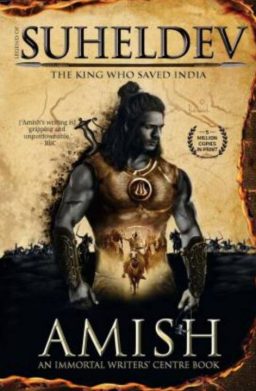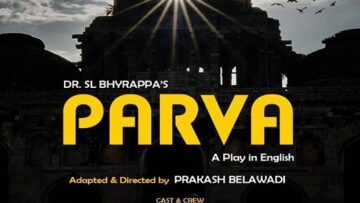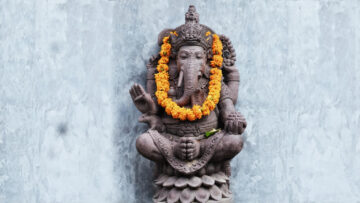Historical Fiction is a genre whose time has come – in Indian English Literature. In the regional languages of India, this genre has a tradition of more than a hundred years. It was shaped by the cultural and political necessities of the times. It played a pivotal role in the formation of new socio-political-cultural consciousness/identities and social reformation that stalwarts found as necessary to shape. This further aided the cause of the freedom movement against the British. However, the genre gained an independent literary status for itself as those writing were doyens themselves as artists. They remain a literary joy and culturally inspirational even today.
Indian English literature of the colonial era had a different purpose in which the Historical fiction genre did not take sufficient roots. However, it is the post-independence era which has been a terrible disappointment. The English educated elite of India largely wrote for a different audience – either alienated or wholly unrelated to India. Ideological circles wielding control of narratives spaces made it worse. Especially, the history of North India has suffered the Sultanate pre-occupation of Durbari historians. In contrast, in Karnataka for instance, even a chieftain like Kuvaralakshma is quite well for his sacrifice. Nevertheless, this decade has seen a very interesting revival even in Indian English literature. The First step in this revival was the retelling of Indian Itihasa-Puranas. The second step is the retelling of Indian historical accounts through traditional narratives and perspectives. So far, Shri. Amish Tripathi was one of the flag-bearers of the former and most successful. He has now stepped into the latter.
Now, for a short summary of the novel. It is about King Suheldev, the prince of Shravasti, in the first half of the 11th Century. His father Mangaldhwaj belongs to a family that was not originally a Kshatriya but through their hard work, sacrifice, learning, vision, and leadership the family carves out a kingdom for themselves – the Shravasti Kingdom. He is on his way to gain acceptance from the larger Bharatamandala as a Kshatriya Arya (Surprisingly Bharatamandala is throughout referred to as India in the novel, possibly to make reading easy). Soon disaster strikes in the form of Mohamed Ghazni. The account of his destroying the Somnath Shiva temple, the extent of massacre, the religious violence and its impact on the times are well known. But disaster strikes the family as well. Suheldev loses his brother Malladev in the cause of protecting the Somnath temple shrine. The family raises to the occasion. They do so not just because of the personal tragedy. They also see a larger danger to the Bharatamandala. The novel is also about how Suheldev rallies around Bharatamandala to rise above their immediate concerns, see the bigger reality and press themselves into action sacrificing local concerns. In this, he also achieves a larger transformation of the society quietly and without much ado. The backdrop of the crisis helps.
This is the 11th Century, which is a very interesting period in the history of Bharata. In the North, after King Yashodharman, Mandsaur, of 6th Century AD and King Harsha, Kanauj, of the 7th Century, there seems an absence of an imperial Kingdom overseeing the region. The South was not that unfortunate. After the decline of Rashtrakutas, there was the second coming of Chalukyas – neither very strong nor very weak. But the Cholas had emerged strong. The great Rajendra Chola ruled with force and firmness. The east was further weakened with the decline of the Palas. The west was witnessing an Arab-Turk attack. Islam was emerging strong and with that, a new era of politico-religious conquest had emerged. Raja Dahir, of Sindh, was the first victim, 200 years before Mohammed Ghazni struck. At the same time, the Buddhist traditions had peaked in their influence on the royalty and the vanikas. They were on their own decline. In summary, the region saw multiple dynamics tearing into the fabric of Northern Bharatamandala. The Dharmic perspective of life, that held the life of Bharatamandala together, was under severe strain and challenge. It is in this flux, that history came to the doorstep of King Suheldev. The novel is about how Suheldev responds to the call of Dharmadevata, restores balance and creates a permanent place for himself in history. The novel is pieced from assorted historical accounts, much is in the realm of the creative imagination of the author. However, the historicity of the existence of King Suhelde and his decisive victory against the Ghaznavid army are unimpeachable. More importantly, Uttara-Bharata was safe from invasions for 150 years until Ghori’s luck got the better of King Prithiviraj Chauhan resulting in a disastrous bend for the flow of the great civilization of Bharata. That Suheldev played a role in delaying this disaster is a historically safe conclusion. The novel is about an account of how he goes about achieving it, especially, how he defeats Salar Maqsud the nephew of Mohd. Ghazni and chief of the Ghaznavid army.
The novel is a remarkable construction of historical and cultural elements. It operates at multiple levels or dimensions or layers – one can choose a term that one loves.
- Firstly, there is a historical narrative – a composition of assorted historical and mythical accounts existing around Suheldev and other contemporary historical figures.
- Secondly, there is a civilizational narrative. The conflict between the religious perspective of a particular strand of Islam, coming from Central Asia, and the Hindu perspective forms the second layer of the novel.
- Thirdly, there is the creative dimension and one that truly and exclusively belongs to Author Amish. It is the characterization, creative freedom, and composition which forms a narrative over the first two narratives and creates a vision which is Amish’s true imagination for a purpose.
The historical narrative begins with the military conquest of the Ghaznavid army, the destruction of the Somnath Temple, the personal loss of Suheldev compelling him to enter the fray, the easy capitulation of the kingdoms of Bharatamandala which fail to unite, and long-drawn conflict between General Salar Maqsud and the Prince Suheldev. It moves from the personal to the political to the social to the civilizational gradually. His personal loss drags him to the conflict. The conflict is a challenging one and requires a confederation to be created hence the political dimension. Suheldev not belonging to a traditional Kshatriya family requires a mini-transformation of sorts to be effected that elevates him to the status of a Kshatriya and that forms the social dimension. Author Amish weaves an interesting narrative of the political situation of the Aryavarta/Brahmavarta region around this core. The weak political situation of Bharatamandala and the confusion that prevailed comes through in each page. With historical accounts of that era being very sketchy, Author Amish presents a best possible reconstruction of the political situation with Shravasti and Kannauj as centres. He goes far deep into the South of Bharatamandala and that gives the novel a pan-India playground. As the personal story of Suheldev subsumes into the larger context, the story begins to acquire a larger narrative that deserves the form of a novel. The narrative certainly and unmistakably establishes the historical importance of the events of the account.
The civilizational narrative of the novel is of greater importance. On the one hand, Bharatamandala was at a low point in terms of the health of the social fabric. For long, the social organization that held the civilization together created a balanced dynamic between its diversity. However, in Suheldev’s time, it had given way to exclusion, conflict and strife. Communities operated in isolation unable to see larger realities. Factors that built bridges between communities had weakened resulting in the whole society collapsing into an inward-looking state. There was no large empire or guiding force that brought diverse elements together in the balance of Dharma.
At the same time, a culture of non-violence shaped by Buddhism had further created confusion in the land. In such a vulnerable situation, it is subjected to a military conquest from Turks whose purpose is beyond military – of religious subjugation, which was not well understood by Bharateeyas. Traditionally, in the Bharata Mandala, a military conquest was just that – a military conquest to extend territorial control, establish peace, harmony and balance – the Dharma. It was beyond Bharateeyas to imagine a military conquest to establish one’s way of life and worship onto the others. It is to the credit of King Suheldev that he sees this larger danger in the conquest. The novel presents this dimension effectively through specific events.
However, the novel is not one-dimensional in its assessment. It clearly points to false pride and a meaningless sense of superiority in Indian communities coming in the way of seeing larger truths. Fundamentally, society was potentially in a self-destructive mode. The western region, the Sindh province, has experienced it but the larger subcontinent is oblivious to the implications yet. The novel goes a step further. It recognizes how the Bharatamandala has already shaped and assimilated an Islamic community without an extremist view of the religion.
This dynamic – forms the second level of this novel. This dynamic is presented in an adequate way, although many complex elements and contradictions are left out. The novel does simplify the nature of the conflict but, suffice to say that it is presented in proportion to the plot and the purpose of the novel. It certainly leaves one asking for more, but it does create enough space for the third dimension of the novel – the creative one where the narrative comes alive.
It is in its creative dimension that the novel excels. Firstly, the novel is unputdownable. The story flows seamlessly and the reader rides a smooth wave throughout. Amish creates many interesting characters who complement and strengthen the larger narrative of both political conquest and the civilizational narrative. King Mahipal and brother Malladev represents the dead-end and irrelevance that a perspective of life reaches. Father Mangaldhwaj represents the gradual emergence of a new sense of purpose. Toshani represents the creative space available to women in civilization even in the times of distress. Guru Kashinath represents the ability of Bharatamandala to create new leadership of wisdom within the same paradigm but in different places at different times. Prime Minister Vrishabh and Chieftain Govardhan represent the ability of Bharatamandala to grow above myopic considerations and see bigger reality. King Ajitpal represents what a state collapses into if the dynasty and the past are the only consideration. Abdul represents the amazing possibility of assimilation that Bharatamandala offers and the need to separate the extremist from the ones we must include. In a short cameo, Rajendra Chola makes a deep impression. It demonstrates what is simply possible when the South is with the North.
There are some beautiful conversations – Suheldev being in all of them. Suheldev-Toshani, Suheldev-Kashinath, Suheldev-Aslan conversations are simply beautiful. Certain episodes, in isolation, are simply marvelous in their art and breath life into the skeletal structure. They make the novel very human and complement the complex political reality of the novel. Characters come to life in front of you – one remembers nearly every single character after a reading. It’s a novel with a skeleton, flesh, blood and life standing as a living being in front of you.
There is a fourth dimension to the novel – of the metaphors, the novel presents to the reader, and the Dhvani it resounds in the hearts and minds of the reader. This dimension has to do with making an 11th-century historical narrative relevant to the present. The civilizational conflict, portrayed from the 11th century, continues to play itself in the present, arguably with far greater ferocity. The essential difference is that the Bharatamandala of the 11th century did not appreciate it enough, which we do today. Through the novel, Author Amish has presented a vision for today leveraging the 11th-century conflict. Time alone will judge its efficacy and impact, but the vision contains interesting elements. Some of them appear as questions that the reader must resolve.
-
Do we understand the nature of this civilizational challenge correctly?
-
Are we able to rise above our communities and immediate realities?
-
Are we able to see the larger Dharma?
-
Do we understand Dharma sufficiently for us to act correctly?
-
Do we know when to make exceptions to our normal code of conduct?
Amish presents these questions to us seamlessly in the narrative through the characterization of King Suheldev, multiple conversations, and resounding metaphors. In this aspect, the novel belongs to the tradition of Dr. SL Bhairappa (Avarana and Saartha), it does not attain epic proportions of Bhairappa’s novels. The most powerful metaphor is in the characterization of the Ghaznavid General Salar himself. The creative freedom assumed by Author Amish has succeeded in multiple ways. There are multiple accounts of Salar on the ground. Amish has brought in all of them but composed them in a unique way, giving himself a creative space to explore the civilizational conflict and propose his own way forwards. It results in an immensely gripping narrative. It creates an exploration space for different possibilities in the resolution of this socio-religious conflict between Muslims and Hindus. Revealing anything more will result in taking away the pleasure of reading and see the possibility by one’s own self.
In the end, the novel belongs to Suheldev. We see civilization through him. We realize the way forward through him. Do we agree with his assessment of the strengths and weaknesses of civilization? Do we agree with his perception of the way forward? How much does Suheldev’s assessment apply to today? Should we reimagine his approach to the conflict in a different way today? These are interesting questions that will play themselves in the coming days. Author Amish has a wide readership – it will be interesting to see how different segments of the society responds to this novel. These big questions aside, artistically there are many great moments in the novel. Chieftain Govardhan, often critical of King Mahipal, discovering an aspect of Mahipal in himself is one such moment. At once, the reader is presented with the enormity of how other conditioning paralyzes us in critical situations.
Yet the novel leaves asking for more. It is indeed a longish version of a short story but in the form of a novel. The conflict is of an epic proportion, but the dimension of an epic requires greater complexity, deeper characterization, and weaving of more narratives into the main narrative. There is a conflict between the ambition of the novel and the substantial complexity that it contains. The novel attempts to compensate for this through many conversations that risk sounding like a speech. One wants more of every character, for each character represents a metaphoric possibility. Creative freedom could have extended to more narratives being created and weaved into. For instance – How did the implication of this victory flow into the future? How did the capitulation of Raja Dahir in the 8th Century flow itself into King Suheldev 200 years later? The Buddhism thread flows like a small stream in the novel, which could have been a major river.
But then, that is the success of good writing. It leaves a reader asking for more, seeing a lot more possibility within the novel. Beyond everything, Amish has given us a new hero – from an era that is completely obliterated from modern history. That is cause for a celebration. Even more importantly, he has revived, rather reestablished the genre of nationalistic historical fiction in Indian English writing. Its relevance today cannot be understated. In that sense, he is the true descendent of a pantheon of such writers who wrote in Indian languages for 150 years. In that sense, we also have a new hero, an author in a language and genre, that we have missed in the last 70 years – thanks to ideologues assuming the role of gatekeepers of narratives.
Welcome, Suheldev – from Bharat to India! Welcome Amish – from tradition writing to History writing in English! We love both.
Legend of Suheldev: The King Who Saved India is available for purchase from Amazon.
Disclaimer: The opinions expressed in this article belong to the author. Indic Today is neither responsible nor liable for the accuracy, completeness, suitability, or validity of any information in the article.











